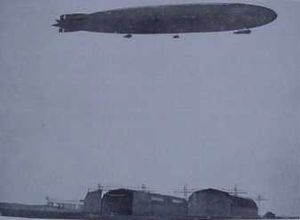
A Zeppelin is a type of rigid airship named after the German Count Ferdinand von Zeppelin who pioneered rigid airship development at the beginning of the 20th century. Zeppelin's notions were first formulated in 1874 and developed in detail in 1893. They were patented in Germany in 1895 and in the United States in 1899. After the outstanding success of the Zeppelin design, the word zeppelin came to be commonly used to refer to all rigid airships. Zeppelins were first flown commercially in 1910 by Deutsche Luftschiffahrts-AG (DELAG), the world's first airline in revenue service. By mid-1914, DELAG had carried over 10,000 fare-paying passengers on over 1,500 flights. During World War I, the German military made extensive use of Zeppelins as bombers and scouts, killing over 500 people in bombing raids in Britain.
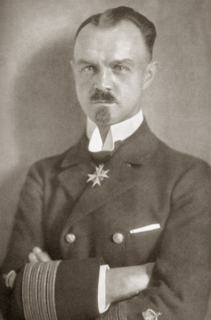
Peter Strasser was chief commander of German Imperial Navy Zeppelins during World War I, the main force operating bombing campaigns from 1915 to 1917. He was killed when flying the war's last airship raid over Great Britain.
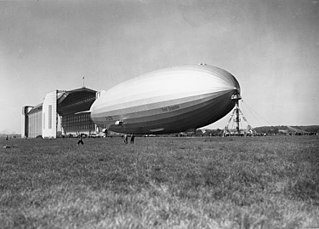
The Graf Zeppelin was the last of the German rigid airships built by the Zeppelin Luftschiffbau during the period between the World Wars, the second and final ship of the Hindenburg class, and the second zeppelin to carry the name "Graf Zeppelin" and thus often referred to as Graf Zeppelin II. Due to the United States refusal to export helium to Germany, the Graf Zeppelin II was filled with hydrogen and therefore never carried commercial passengers. It made 30 flights over 11 months in 1938–39, many being propaganda publicity flights; but staff of the Reich Air Ministry were aboard to conduct radio surveillance and measurements. The airship was scrapped in 1940, for its aluminum.
The best known German strategic bombing campaign during World War I was the campaign against Britain, although strategic bombing raids were carried out or attempted on other fronts. The main campaign against Britain started in January 1915 using airships. From then until the end of World War I the German Navy and Army Luftstreitkräfte mounted over 50 bombing raids on the United Kingdom. These were generally referred to as "Zeppelin raids": although both Zeppelin and Schütte-Lanz airships were used, the Zeppelin company was much better known and was responsible for producing the majority of the airships used. Weather conditions and night flying conditions made airship navigation and maintaining bombing accuracy difficult. Bombs were often dropped miles off target and accurate targeting of military installations was impossible. The civilian casualties made the Zeppelins an object of hatred, and they were dubbed "baby-killers". With the development of effective defensive measures the airship raids became increasingly hazardous, and in 1917 the airships were largely replaced by aeroplanes.

The Zeppelin LZ 1 was the first truly successful experimental rigid airship. It was first flown from a floating hangar on Lake Constance, near Friedrichshafen in southern Germany on 2 July 1900. "LZ" stood for Luftschiff Zeppelin, or "Airship Zeppelin"

The two Hindenburg-class airships were hydrogen-filled, passenger-carrying rigid airships built in Germany in the 1930s and named in honor of Paul von Hindenburg. They were the last such aircraft ever built, and in terms of their length and volume, the largest Zeppelins ever to fly. During the 1930s, airships like the Hindenburg class were widely considered the future of air travel, and the lead ship of the class, LZ 129 Hindenburg, established a regular transatlantic service. The destruction of this ship in a highly publicized accident was to prove the death knell for these expectations. The second ship, LZ 130 Graf Zeppelin, was never operated on a regular passenger service, and was scrapped in 1940 by order of Hermann Göring.
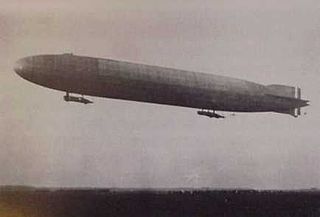
Zeppelin LZ 54, given the military tactical designation L 19, was a Zeppelin of the Imperial German Navy. While returning from her first bombing raid on the United Kingdom in early 1916, she came down in the North Sea. Her crew survived the crash, but drowned after the crew of a British fishing vessel refused to rescue them; at the time this was a widely reported and notorious incident.

The airship LZ 37 was a World War I Zeppelin of the German Kaiserliche Marine. It was the first Zeppelin to be brought down during the war by an enemy plane on the night of 6 to 7 June 1915.
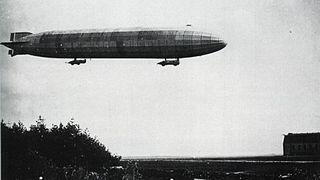
The Zeppelin P Class was the first Zeppelin airship type to be produced in quantity after the outbreak of the First World War. 22 of the type were built as well as 12 of a lengthened version, the Q Class . They were used for many of the airship bombing raids on the United Kingdom in 1915-16, for naval patrol work over the North Sea and Baltic and were also deployed on the eastern and south-eastern fronts.

The Zeppelin R Class was a type of rigid airship developed by Zeppelin Luftschiffbau in 1916 for use by the Imperial German Navy and the German Army for bombing and naval patrol work. Introduced in July 1916 at a time when British air defences were becoming increasingly capable, several were lost in the first months of operation, leading the Germans to reconsider their technical requirements and eventually to develop airships capable of bombing from a greater height. Most surviving examples were modified to meet these requirements, by reducing weight at the expense of performance. A total of 17 were built.
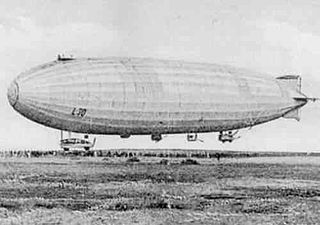
Zeppelin "L 30" was the first R-class "Super Zeppelin" of the German Empire. It was the most successful airship of the First World War with 31 reconnaissance flights and 10 bombing runs carrying a total of 23,305 kg of bombs, with the first ones targeting England, and the four final raids targeting Livonia and Ösel (Saaremaa). At the time of its construction, It was the world's largest Zeppelin, and with its 6 engines, "L 30" could reach speeds higher than 100 km/h, making it the fastest Zeppelin in the world too.
The LZ 59 was a World War I German Navy Airship and was the first Q-Class zeppelin with a then record length of 178.5 metres. It was allocated the tactical numbering L 20 and carried out a total of 19 flights, including 2 raids on England and 10 reconnaissance missions.
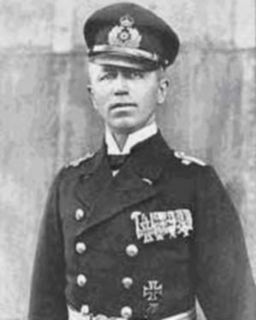
Kapitänleutnant Franz Stabbert was a Kapitänleutnant of the German Kaiserliche Marine, he is most known for being the commander of the doomed LZ 59 during the First World War.
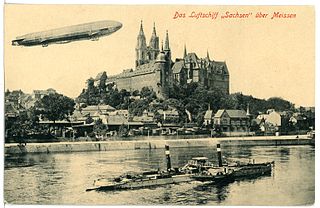
LZ 17 Sachsen was the fourth Type H improved Schwaben-class Zeppelin that first flew on 3 May 1913 and operated as a passenger airship with DELAG until WWI, when it was commandeered for service with the Imperial German Army. After being transferred to the Imperial German Navy, LZ17 was dismantled in 1916.

The Zeppelin LZ 23 was the 2nd improved L-class Zeppelin, and the eleventh airship of the Imperial German Army, first flown on 21 February 1914 and shot-down by ant-aircraft fire on 23 August 1914.

Zeppelin LZ 66, Imperial German Navy serial L 23, took part in 51 reconnaissance missions during World War I and on 21 August 1917 it was shot down by Second Lt Bernard A. Smart, flying a Sopwith Pup.

The Imperial German Army Type P Zeppelin LZ 55, confusingly given the tactical number LZ 85, was a World War I zeppelin of the Imperial German Army

The Imperial German Navy Zeppelin LZ 112, given the tactical number L 70, was an x-class / L70-class World War I zeppelin of the Imperial German Navy.
